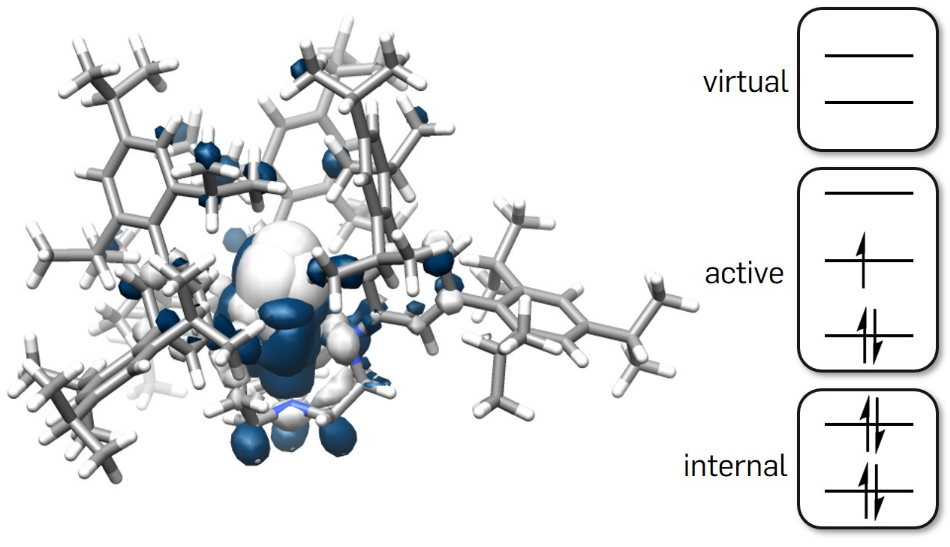Michael Roemelt
Lehrstuhl für Theoretische Chemie, Ruhr-Universität Bochum, Germany
Video Recording
This video is no longer available.
Abstract
Being introduced in the 1970’s,[1] Multireference (MR) methods are a branch of electronic structure methods that can yield accurate results for systems where approaches based on a single refence function notoriously fail to even provide a qualitatively correct picture. Owing to their high flexibility MR methods have shown great utility in various areas of chemistry, e.g. transition metal chemistry and photochemistry.[2–4] Despite their undoubted success virtually all MR methods suffer from their comparably high computational cost which effectively limits their scope of application. However, in the last decades technical and conceptual advances have considerably pushed the boundaries of feasibility. In particular, the introduction of multiple approximate Full-CI Solvers (DMRG, FCIQMC etc.) has gained a lot of attention as it allows one to treat systems that have previously been untractable.[5–8] This lecture starts with a comprehensible introduction of the most widely used techniques in the field of MR quantum chemistry. Afterwards, a few examples will be presented that demonstrate the potential and capabilities of modern MR methods in different fields.[4, 9, 10] Importantly, technical difficulties and limitations of MR methods will be an integral part of the lecture.

Key references
[1] R. J. Buenker, S. D. Peyerimhoff, Theor. chim. acta 1974, 35, 33–58.
[2] F. Neese, T. Petrenko, D. Ganyushin, G. Olbrich, Coord. Chem. Rev. 2007, 251, 288–327.
[3] P. G. Szalay, T. Müller, G. Gidofalvi, H. Lischka, R. Shepard, Chem. Rev. 2012, 112, 108–181.
[4] H. Lischka, D. Nachtigallová, A. J. A. Aquino, P. G. Szalay, F. Plasser, F. B. C. Machado, M. Barbatti, Chem. Rev. 2018, 118, 7293–7361.
[5] G. K.-L. Chan, S. Sharma, Annu. Rev. Phys. Chem. 2011, 62, 465–481.
[6] G. H. Booth, A. J. W. Thom, A. Alavi, J. Chem. Phys. 2009, 131, 054106.
[7] N. M. Tubman, J. Lee, T. Y. Takeshita, M. Head-Gordon, K. B. Whaley, J. Chem. Phys. 2016, 145, 044112.
[8] S. Sharma, A. A. Holmes, G. Jeanmairet, A. Alavi, C. J. Umrigar, J. Chem. Theory Comput. 2017,
13, 1595–1604.
[9] M. Roemelt, J. Chem. Phys. 2015, 143, 044112.
[10] M. Roemelt, D. A. Pantazis, Adv. Theory Simul. 2019, 2, 1800201.
